The Legacy of Cassius Clay… Could it be in the Name?
June 19, 2023 by Laura Heilenman · Leave a Comment
While looking through an October 25, 1862 issue of Harper’s Weekly, a tiny paragraph on the 2nd page caught my eye. Titled “NO HANGING MATTER”, this article began:“Mr. Cassius M. Clay was born in a slave State, and early convinced that slavery was wrong, he has manfully advocated emancipation in Kentucky; and has been universally known as one of the most valiant of the anti02-slavery orators.” Wondering if the mother of Cassius Clay (later known as Muhammad Ali) knew the legacy with whom she was identifying when she named her baby boy, a quick bit of research online answered my question. Not only was she aware of the connection, but she purposefully chose the name because of this 1800’s abolitionist hero. Crossing both racial barriers and nearly 200 years, these 2 men both established lasting legacies.
Sometimes, the most delightful finds in our newspapers are the small, unexpected, little gems that give new insight into people of the past and the present – and in this particular instance, this “text” was discovered hiding in a title known for its illustrations.
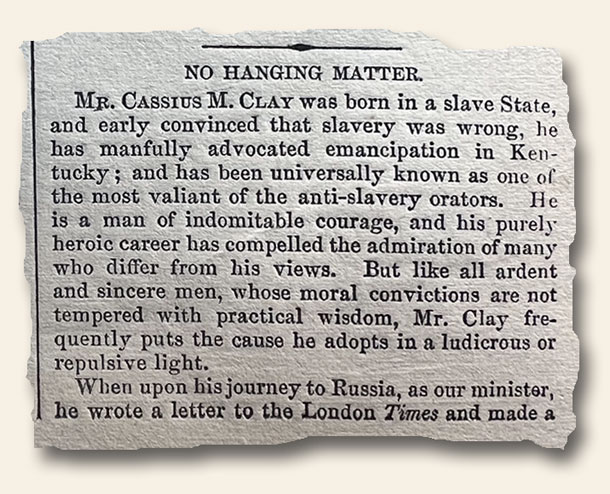
Happy “Victoria Day” (Canada)…
May 22, 2023 by GuyHeilenman · Leave a Comment
Shown below is a Canadian-themed, woodcut illustration from a sketch by Frederic Remington as printed in the Harper’s Weekly dated March 22, 1890.
To our friends up north…
Happy Victoria Day!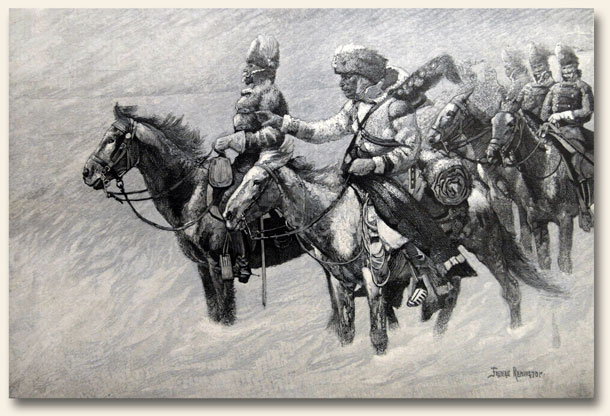
(original available at RareNewspapers.com – digital available at History’s Newsstand @ Etsy)
Our obsession with “firsts”… History gives us plenty – including John Rock…
November 28, 2022 by Laura Heilenman · Leave a Comment
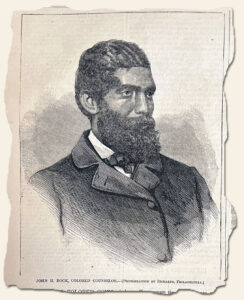 We are a people enamored with firsts: our 1st kiss … finishing in 1st place… 1st to fly… 1st to discover “The New World” (still up for debate)… When I study Scripture, I love using something called “the law of first mention” which says, we best understand a particular word or doctrine by finding and then learning all about the first place in Scripture the word or doctrine was revealed. We also love the 1st man on the moon, the 1st rock opera – and the list goes on and on. Speaking of 1sts…
We are a people enamored with firsts: our 1st kiss … finishing in 1st place… 1st to fly… 1st to discover “The New World” (still up for debate)… When I study Scripture, I love using something called “the law of first mention” which says, we best understand a particular word or doctrine by finding and then learning all about the first place in Scripture the word or doctrine was revealed. We also love the 1st man on the moon, the 1st rock opera – and the list goes on and on. Speaking of 1sts…
On February 2, 1865, THE NEW YORK TIMES gave us another first to appreciate, and then later, on February 25, 1865, HARPER’S WEEKLY put a face on this first: that is, John Rock becoming the first African American attorney admitted to the bar of the U.S. Supreme Court. The New York Times stated in part: “J. S. Rock, of the Supreme Court of Massachusetts, was to-day, on motion of Senator Sumner, admitted an Attorney and Counsellor in the Supreme Court of the United States.” Quite historic!
Whether we are reading or collecting “early” newspapers, history provides us with a fascinating list of 1sts which can be celebrated and studied… 1st shut out in baseball… 1st Hispanic Supreme Court Justice… shall I go on?
An oddity from 1863 – The Battle of Gettysburg…
September 9, 2022 by GuyHeilenman · Leave a Comment
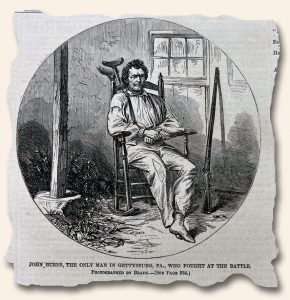 I don’t know about you, but if my town was occupied by enemy troops and the battle was ragging all around me, I’m thinking I would likely take up arms and join my fellow compatriots – and a host of my neighbors would certainly do the same. So, when I recently saw the illustration of “John Burns, the only man in Gettysburg, PA, who fought at the battle” on the cover of the August 22, 1863 Harper’s Weekly, I was perplexed. I understand the majority of able-bodied men were likely off to war elsewhere, but to think no one was left to “defend the home-front” other than this one man is a bit confounding. The writer of the corresponding article also took note of this curiosity, and his comments are posted below.
I don’t know about you, but if my town was occupied by enemy troops and the battle was ragging all around me, I’m thinking I would likely take up arms and join my fellow compatriots – and a host of my neighbors would certainly do the same. So, when I recently saw the illustration of “John Burns, the only man in Gettysburg, PA, who fought at the battle” on the cover of the August 22, 1863 Harper’s Weekly, I was perplexed. I understand the majority of able-bodied men were likely off to war elsewhere, but to think no one was left to “defend the home-front” other than this one man is a bit confounding. The writer of the corresponding article also took note of this curiosity, and his comments are posted below.
This statement was written shortly after the battle, and often, as time goes on, new information is unearthed. With this in mind, if anyone has information which would refute this claim, please send us a note and we will update this post. Thanks in advance.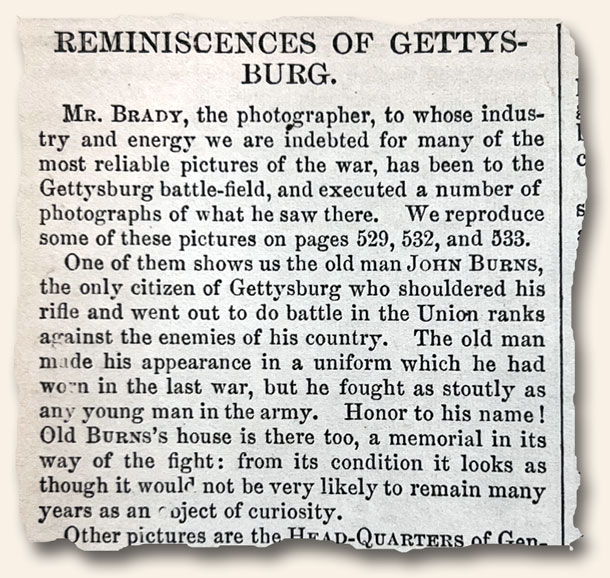
Happy Independence Day – Contrasting Celebrations…
July 4, 2022 by GuyHeilenman · Leave a Comment
The July 11, 1868 issue of Harper’s Weekly contained prints by two notable illustrators – intentionally included to contrast typical 4th of July celebrations in the rural south (Thomas Worth) with those held in northern cities (Winslow Homer). Their diversity reminded me that we can have profound differences while maintaining our bonds of common citizenry. The Revolutionary War was fought for freedom. Today we fight to maintain that freedom. While our diversity in many ways has widened over the past few decades, this new battle is no less noble – and one which calls for unity of purpose. Hopefully we will heed the call. Happy 4th!

Journalism from Early America to the Digital Age… Election Fraud and more…
June 10, 2022 by GuyHeilenman · Leave a Comment
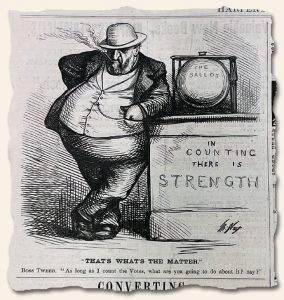 Someone recently brought to my attention an article posted on the website “Brewminate: A Bold Blend of News and Ideas”. While scanning the article I was intrigued by the presence of illustrations of newspapers we have or have previously offered. One in particular which caught my attention was the timely political cartoon by Thomas Nast found in the Oct. 7, 1871 issue of Harper’s Weekly. While a degree of election fraud is (unfortunately) part-and-parcel of the election process, I was inspired to read through the entire article, and in so doing, found it to be quite informative… and wondered if the friends of Rare & Early Newspapers might also find it interesting. Hopefully you will also enjoy reading it:
Someone recently brought to my attention an article posted on the website “Brewminate: A Bold Blend of News and Ideas”. While scanning the article I was intrigued by the presence of illustrations of newspapers we have or have previously offered. One in particular which caught my attention was the timely political cartoon by Thomas Nast found in the Oct. 7, 1871 issue of Harper’s Weekly. While a degree of election fraud is (unfortunately) part-and-parcel of the election process, I was inspired to read through the entire article, and in so doing, found it to be quite informative… and wondered if the friends of Rare & Early Newspapers might also find it interesting. Hopefully you will also enjoy reading it:
“Journalism from Early America to the Digital Age”
Take a Closer Look … The Delicate Details of Woodcut Prints…
April 14, 2022 by Laura Heilenman · 1 Comment
I have had some fascinating conversations this past year with one of our collecting friends who is an expert in woodcut prints. I won’t be a name dropper, however, if he is reading this, he will have no doubt as to who I am referencing. I greatly appreciate the time he took to share his knowledge which has motivated me to pause and look more carefully at every print I encounter in the RareNewspapers archives. My proficiency in this area is sparse and not terribly reliable but I did want to share a few takeaways.
Some artists of woodcut prints would draw on paper and send the illustration to a publisher who would cut the paper into tiny square blocks and have each one sketched onto a square block of wood. These wooden squares would be handed out to different craftsmen who would carve their block and then the blocks would be rejoined for printing. Sometimes, when time was of the essence, each craftsman would use carving tools which could create many tiny lines at once. If you look closely at many such illustrations, you can tell these prints have hundreds of parallel lines – indicating the use of these tools. Occasionally, when more time was available, each line was formed individually – a painstaking process, but one which produced an almost unimaginable degree of detail!
Some artists preferred to draw their own prints directly onto the wood and so they were sent a group of one-inch square pieces bound together with twine. When the artist had finished their drawing, the publisher would untie the pieces and distribute the blocks to the woodcarvers.
Regardless of how each print was created, the detail, craftsmanship and artistic skill needed to produce one illustration is mind blowing. So, the next time you glance through a Harper’s Weekly, Leslie’s Illustrated , Illustrated London News, or handful of other illustrated titles of the “woodcut era”, perhaps you will join me in pausing and giving a bit of deference to these creators of beauty. Thanks Bill for sharing this delightful insight with me.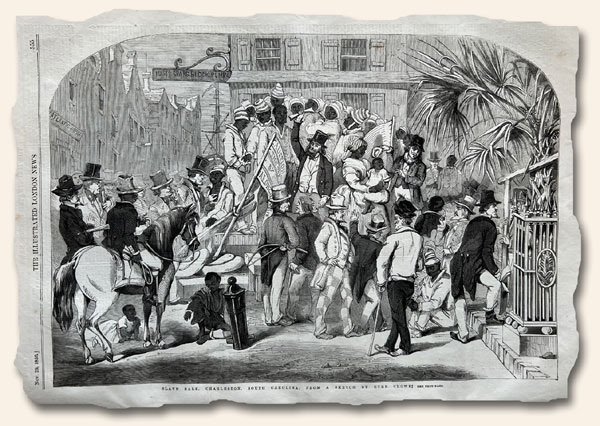
They put it in print – an 1877 opinion of The Press…
January 6, 2022 by Laura Heilenman · Leave a Comment
Sometimes a picture says it all. The illustration below was printed in a Harper’s Weekly dated June 2, 1877, but left undated some might think it is a recent print. Do these “1000 words” from the 19th century, in fact, have staying power? You decide.
A Tale of Two Sides – Belle Boyd vs. Elizabeth Van Lew…
November 8, 2021 by Laura Heilenman · Leave a Comment
How often, as we are investigating the Civil War, do we come upon stories about families divided… brother fighting brother? The question was a bit rhetorical as any of us who have spent much time studying the Civil War knows, it was a tale of two sides and fractured relationships. Recently, I came upon a New York Times with fascinating coverage of an infamous female spy for the Confederacy named Belle Boyd. The issue describes her as follows: “Bello Boyd… being about twenty-five years of age, of sorrel hair, piercing gray eyes, closely knit form, strictly virtuous, very energetic, and decidedly ‘gabby’ “. The article goes on to say: “Her father, who is in moderate circumstances, was unable to endow her with a ‘magnificent fortune’, or ‘ superior education’. So much for this Southern heroine; and yet she has not failed to accomplishing her full share of treason, having undoubtedly betrayed our forces at Front Royal, whereby the First Maryland Regiment was so badly cut up”. Wikipedia states: “Boyd was arrested at least six times but somehow evaded incarceration. By late July 1862, detective Allan Pinkerton had assigned three men to work on her case.” [see the image below for more]
Intrigued by this Confederate femme fatale, I began to look for a Union counterpart. It wasn’t long before I came upon, Elizabeth Van Lew. Elizabeth lived in Richmond Va. but was born into a family with abolitionist ties and was educated in Philadelphia, the city where her abolitionist grandfather had been mayor. Working as a nurse to Union soldiers imprisoned in Richmond, she aided prisoners trying to escape and listened for information she could pass on to the Union Army. General Grant said of Van Lew, “You have sent me the most valuable information received from Richmond during the war.” On July 14, 1866, Harper’s Weekly covered this amazingly brave woman and her undercover work for the north.
Feeling as if I have just scratched the surface with these woman spies… perhaps there’ll be more to come.
A Thankful Heart from the Mouth of Babes…
September 20, 2021 by Laura Heilenman · Leave a Comment
Sometimes an image perfectly captures an emotion or a moment in time. Sometimes that moment is in the present but sometimes it won’t be noticed for decades. Recently, as I was putting together issues for one of our collectors, I came across an image on the front of a Harper’s Weekly dated January 4, 1902 which was that perfect snapshot. Our culture seems to have gotten murky and a bit hard to decipher at times., but on the front of the photo of a little boy captured the simplicity of his life. He was thankful for a man who had sacrificed greatly to make his life better. Perhaps, as a way to cut through the muck and mire of our time, a thankful heart is just what our culture… what we… what I need.


